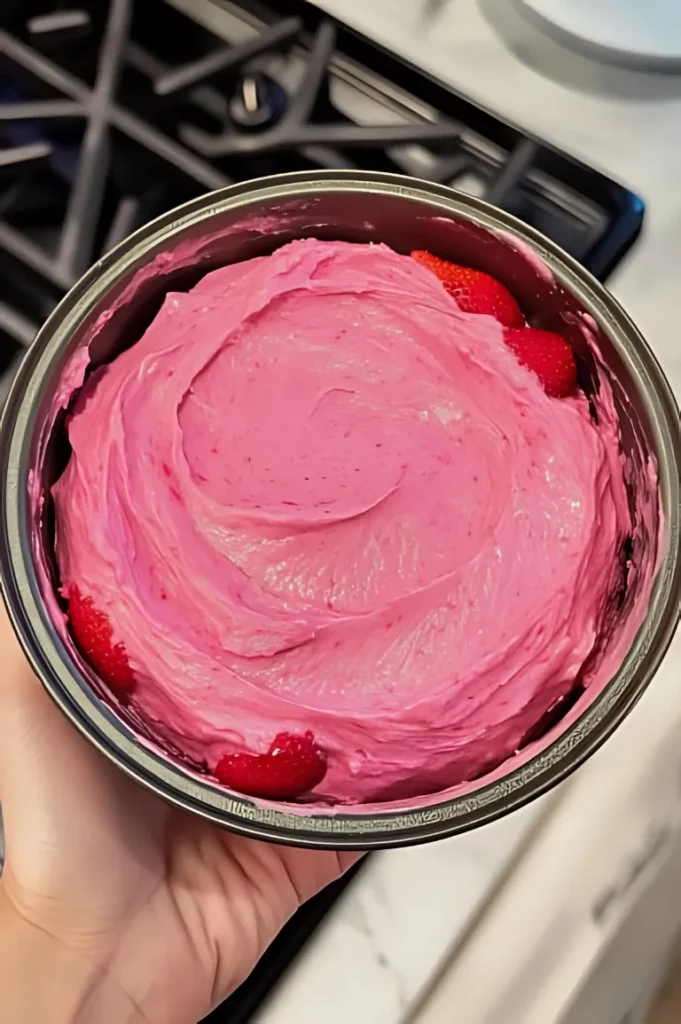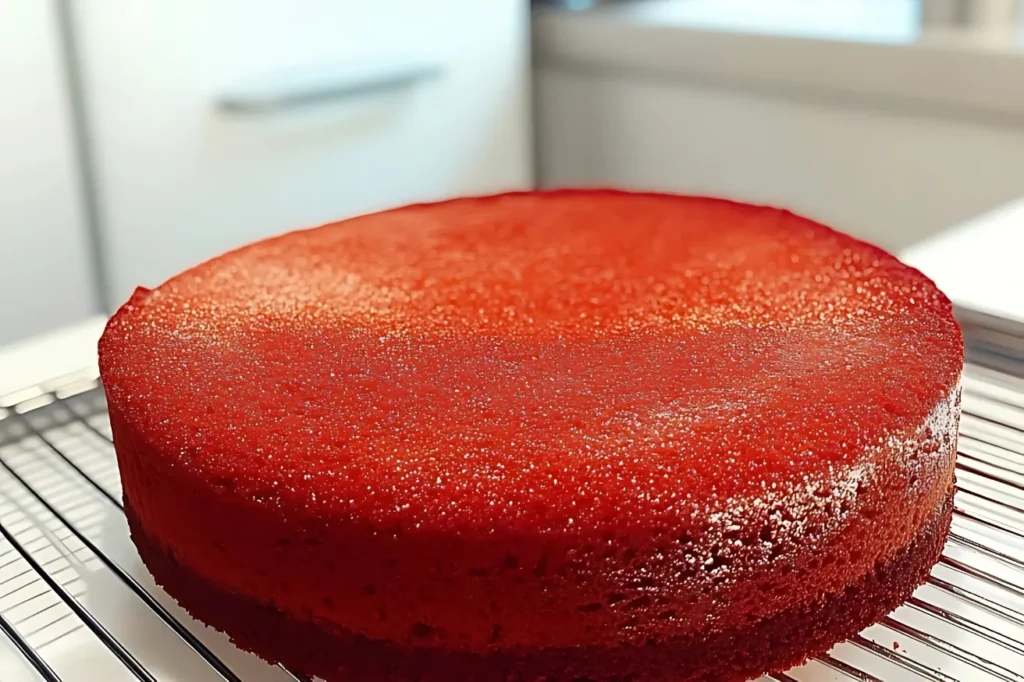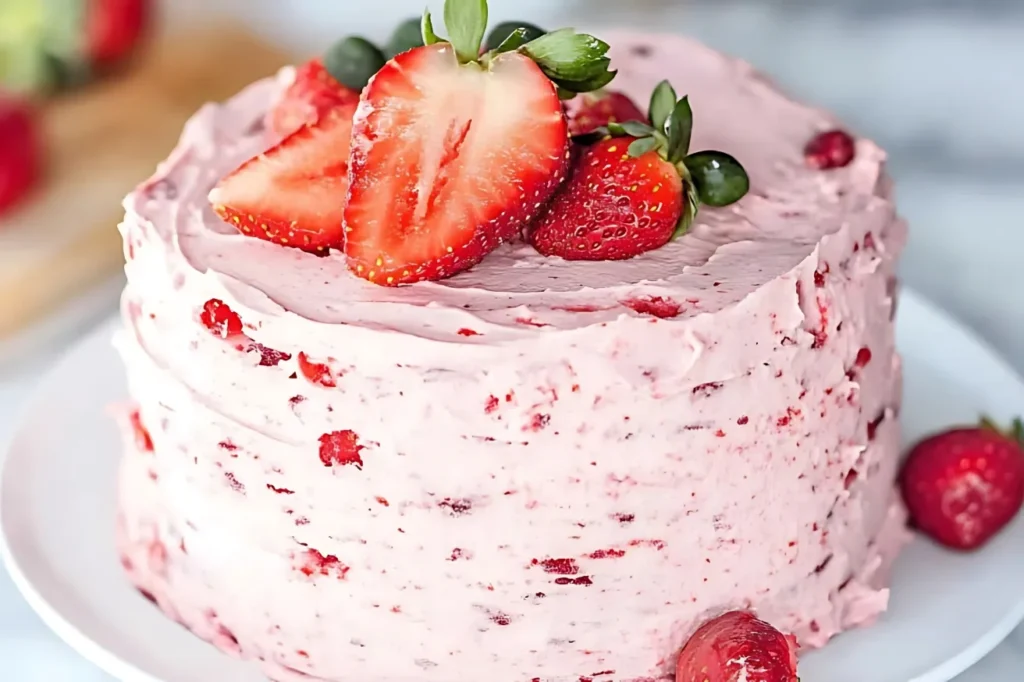Baking the perfect strawberry cake can be a wild ride. You’ve followed the recipe and put your heart into it. Yet, your cake turns out heavy and disappointing. The dream of a light, fluffy cake seems just out of reach, leaving you frustrated.
Every baker knows the heartbreak of a dense strawberry cake. The texture is wrong, and the crumb is compact. Your hopes for a beautiful dessert sink faster than a poorly risen cake. But don’t worry – you’re not alone in this baking challenge.
Understanding why your strawberry cake turns out dense is key. It’s the first step to creating the magical, airy dessert you’ve been dreaming about. From ingredient measurements to mixing techniques, many factors can make your cake go from flat to fabulous.
Key Takeaways
- Dense cakes often result from simple technical mistakes
- Ingredient temperature plays a crucial role in cake texture
- Precise measurements are critical for successful baking
- Mixing techniques dramatically impact cake lightness
- Fresh ingredients make a significant difference in dessert recipes
Common Causes of Dense Strawberry Cake

Making the perfect fruit cakes needs precision and a grasp of baking science. Dense strawberry cakes can be a challenge, even for seasoned bakers. But, knowing the main causes can help you get a light, fluffy texture.
Several common mistakes can ruin your cake baking journey. These mistakes can turn a delightful dessert into a heavy, dense cake. Let’s look at the main reasons for dense strawberry cakes.
Overmixing the Batter
Mixing your cake batter might seem simple, but it’s easy to overdo it. Too much mixing can make the cake tough and. When you mix too hard, you’re fighting against the light, airy texture you want.
- Mix ingredients until just combined
- Stop when no visible flour streaks remain
- Use a gentle folding technique
Incorrect Flour Measurements
Accuracy is key in cake baking. Too much flour can make your strawberry cake as hard as a brick. Always measure flour with the spoon and level method for exactness.
Wrong Temperature Ingredients
Cold ingredients can ruin your cake’s texture. Eggs, butter, and milk that are room temperature mix better. This creates a batter that rises well during baking.
- Remove ingredients from refrigerator 30-60 minutes before baking
- Warm eggs by placing in lukewarm water
- Soften butter at room temperature
By knowing these key factors, you’ll be closer to making a light, tasty strawberry cake. It will surely impress your family and friends.
The Role of Fresh Strawberries in Cake Texture
Baking with fresh strawberries can change your cake’s texture. They add moisture, which affects the cake’s density and structure. It’s important to know how they impact your baking.
Choosing the right strawberries is key. Look for berries that are:
- Bright red and firm
- Free from bruises or soft spots
- Fully ripe but not overripe
To avoid a soggy cake, prepare strawberries carefully. Here are some tips:
- Pat strawberries dry with paper towels
- Coat lightly in flour before adding to batter
- Dice into small, uniform pieces
Fresh strawberries add moisture, which can be a challenge. Strategic incorporation is key to keep your cake right. By handling them wisely, you can make a moist strawberry cake without it being too dense.
Professional bakers suggest using strawberries sparingly and draining them well. This keeps the cake’s structure while adding a natural fruit flavor.
Understanding Proper Mixing Techniques for Strawberry Cake

Mastering cake baking is all about precision in mixing. The success of your strawberry cake depends on how well you mix the ingredients. Knowing the right techniques can turn a dense cake into a light, fluffy treat.
Creaming Method Explained
The creaming method is key for a tender strawberry cake. Begin by beating softened butter and sugar until it’s light and fluffy. This step adds air to the batter, making the cake soft.
- Use room temperature butter for best results
- Beat butter and sugar for 3-5 minutes
- Watch for a pale, creamy consistency
Folding vs Beating
Knowing when to fold and when to beat is crucial. Beating adds air and develops gluten, while folding keeps air bubbles and prevents overmixing.
Proper Ingredient Order
The order in which you add ingredients affects the cake’s texture. Always add dry ingredients slowly to avoid clumps and ensure even mixing.
- Cream butter and sugar first
- Add eggs one at a time
- Alternate dry ingredients with liquid
- Gently fold in fresh strawberries last
Essential Ingredients for a Light and Fluffy Cake
Creating the perfect strawberry cake is all about understanding the chemistry behind your recipes. The right ingredients can turn a dense cake into a light, airy masterpiece. It’s a dessert that melts in your mouth.
Your cake’s texture comes down to a few key ingredients. Flour is crucial for the cake’s structure. For the lightest result, use cake flour instead of all-purpose flour. Cake flour has less protein, making the cake softer and more delicate.
- Baking powder and baking soda are essential leavening agents
- Fresh eggs at room temperature provide better volume
- Butter or oil impacts the cake’s moisture and tenderness
Choosing high-quality ingredients is key to a perfect cake. Here are some tips for achieving the perfect cake texture:
- Use room temperature ingredients for better mixing
- Sift dry ingredients to remove lumps
- Measure ingredients precisely
Liquid ingredients like milk or buttermilk also help. They make the cake more tender and add moisture. Try different combinations to find your perfect strawberry cake recipe.
Temperature and Timing: Critical Baking Factors
Making perfect summer desserts needs careful attention to temperature and timing. Your bakery delights depend on knowing how heat and cooling affect cake texture and quality. Getting these right can turn a simple strawberry cake into a memorable treat.
Optimal Oven Settings
To make the perfect strawberry cake, start with the right oven temperature. Here are some important tips:
- Preheat your oven to 350°F (175°C)
- Use an oven thermometer to check the actual temperature
- Put the cake pan in the center rack for even heat
- Don’t open the oven door for the first 20 minutes of baking
Cooling Process Impact
The cooling stage is key for your bakery delights. Take your strawberry cake out of the pan after 10-15 minutes of resting. Let it cool completely on a wire rack. This helps keep the texture right and prevents moisture buildup.
Storage Temperature Effects
Storing your summer desserts properly keeps them fresh and tasty:
- Keep at room temperature for 1-2 days
- Refrigerate for up to 5 days in a sealed container
- Let it come to room temperature before serving for the best taste
Troubleshooting Your Strawberry Cake Recipe

Baking the perfect strawberry cake can be tough. But, with the right techniques, you can fix common problems. Your fruit cakes might face issues that affect their texture and taste.
First, find out what problems you usually face. Here are some tips to help:
- Sinking Strawberries: Coat fresh strawberries in flour before adding them to the batter. This technique ensures the fruit is evenly spread.
- Uneven Baking: Use an accurate thermometer to check your oven’s temperature. Also, rotate the cake halfway through baking.
- Moisture Control: Cook down the strawberry puree to concentrate flavors. This reduces excess liquid.
When you’re baking, focus on how you prepare your ingredients. Use room temperature eggs and butter for a smoother batter. Also, measure your flour carefully to avoid density problems.
Remember, getting it right takes practice. Every time you bake, you learn something new. Don’t worry about mistakes at first. Even expert bakers had to start somewhere.
Conclusion
Making the perfect strawberry cake is an art that needs patience and practice. You’ll learn how ingredients work together and how to mix and bake them. Every layer of frosting and crumb shows your growing skills.
Baking is a journey of learning. With each strawberry cake, you’ll discover more about texture, flavor, and technique. Don’t worry about mistakes. See them as chances to get better. Even pros like those at Aiden Recipes know that’s how you get better.
Your love for making tasty desserts will lead to your success. By using what you’ve learned, you’re on your way to being a strawberry cake master. Keep trying new things, keep baking, and most importantly, enjoy making delicious treats for your loved ones.
FAQ
How can I prevent my strawberry cake from becoming dense?
To avoid a dense cake, don’t overmix the batter. Use the right amount of flour and let ingredients warm up to room temperature. Gently add fresh strawberries to keep the cake light.
What’s the best way to incorporate fresh strawberries into my cake?
Dry fresh strawberries before adding them to the batter. Lightly flour them to prevent sinking. Fold them in gently to keep the cake’s air bubbles intact.
Why do my strawberries always sink to the bottom of the cake?
Strawberries sink because of their weight and moisture. Cut them into smaller pieces and flour them before adding. This helps them distribute evenly in the batter.
How do I know if I’m overmixing my cake batter?
Stop mixing when ingredients are just combined. Overmixing makes the cake tough. Mix until the batter looks slightly lumpy but no flour streaks remain.
Can I use frozen strawberries in my cake recipe?
Frozen strawberries work, but thaw and drain them first. Pat them dry to remove excess moisture. This prevents a soggy, dense cake.
What’s the ideal oven temperature for baking a strawberry cake?
Bake at 350°F (175°C) for best results. Preheat your oven and use the center rack for even baking. Check the cake 5-10 minutes before the recommended time.
How can I make my strawberry cake more moist?
Use sour cream, buttermilk, or Greek yogurt to add moisture. Be careful not to add too much liquid. A simple syrup brushed on after baking can also help.
How do I store a fresh strawberry cake?
Store the cake in an airtight container in the fridge for 3-4 days. If frosted, keep it chilled to prevent spoilage.
Can I make a strawberry cake ahead of time?
Yes, bake the layers in advance. Cool, wrap tightly, and store at room temperature for 1-2 days or freeze for a month. Frost and add strawberries just before serving.
What’s the best flour to use for a light strawberry cake?
Cake flour is best for a light texture due to its low protein content. If you don’t have cake flour, make a substitute by removing two tablespoons of all-purpose flour per cup and adding cornstarch.

